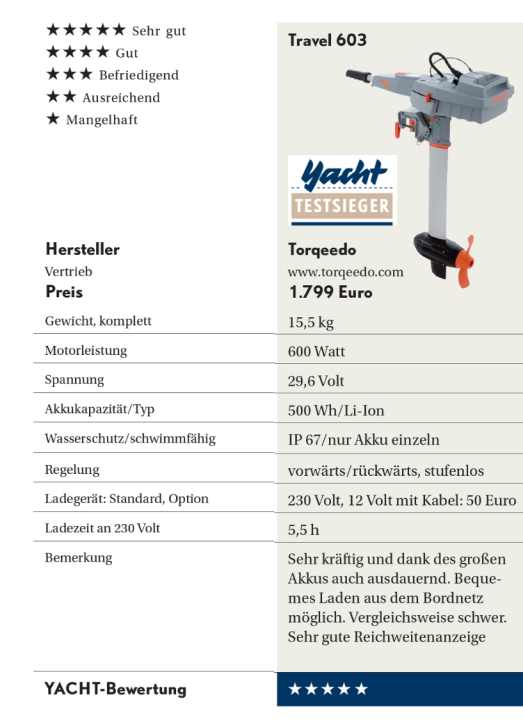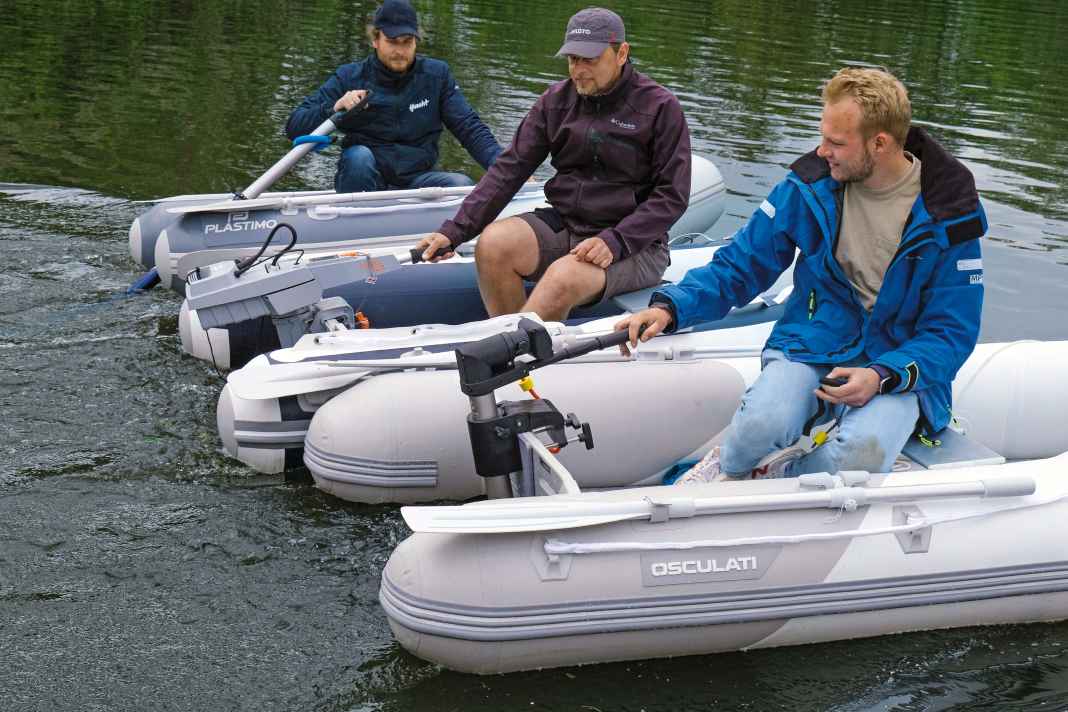





These electric motors were tested:
Temo 450 (1,591 Euro)
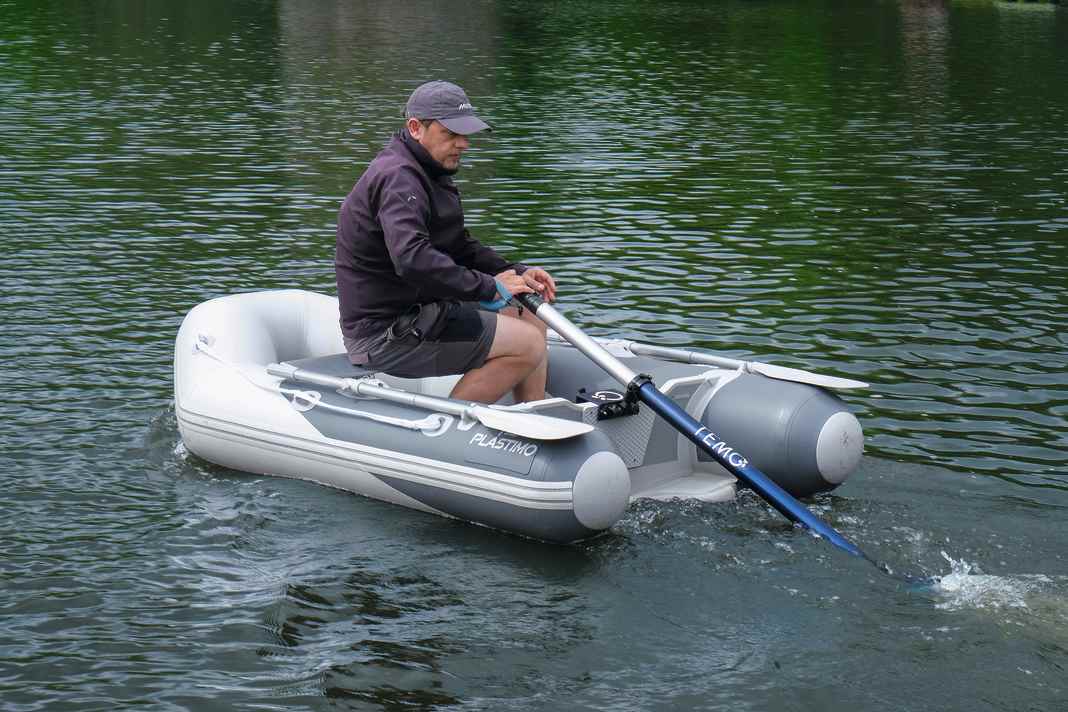





On the Temo 450, the entire drive unit and battery are housed in a telescopic aluminium tube. The electric motor is controlled via a handle at the upper end. The advantage of this design is that it does not require a fixed mirror. A converted oarlock serves as a bracket. This means that the Temo can be attached to practically any vessel, from kayaks to beach catamarans or small cruisers. If necessary, the motor can even be driven by hand. However, you should not call up the full power, as the large three-blade propeller pushes hard. Manoeuvring with the long drive requires getting used to, as the direction and immersion depth of the propeller must be controlled. As soon as the prop draws air, the performance drops sharply.
- + Processing and thrust
- + Simple operation
- + Protected screw
- - Sensitive gas flue
- - Special handling
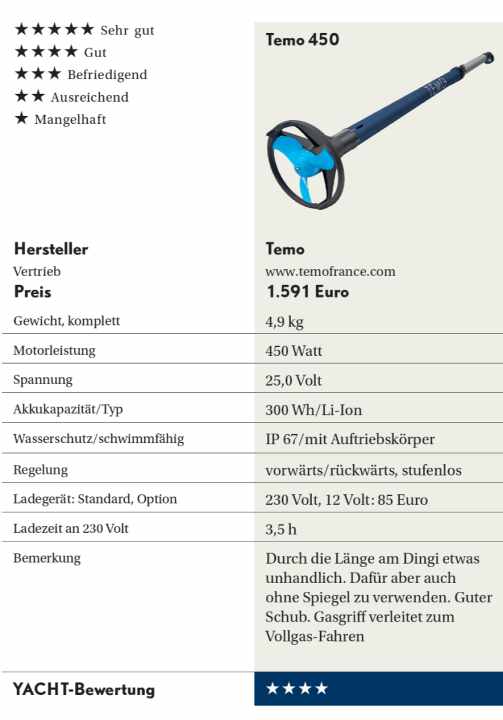
Thrustme kicker(1,450 euros)
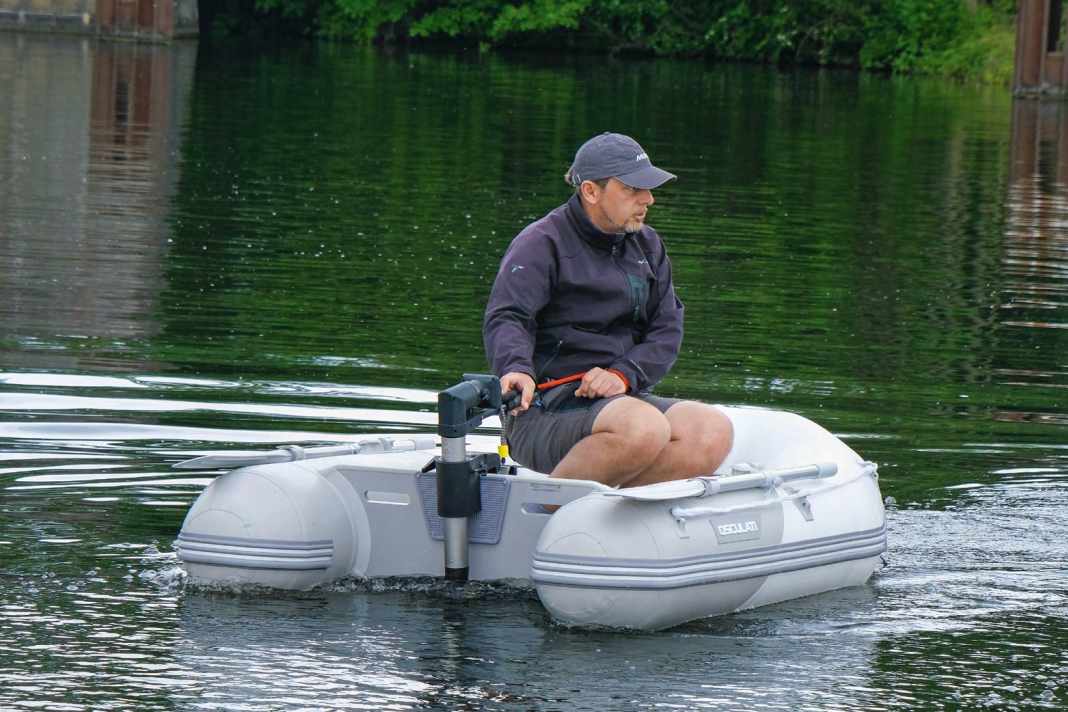





The handling of the kicker is a dream. With its low weight, the electric motor can be easily transferred to the dinghy and mounted with one hand. Thanks to the sheathing screw, you can switch off the motor without scratching or damaging the prop. Operation is just as easy. You steer using the extendable tiller and control the engine power using the waterproof radio remote control. There are six levels each for forwards and backwards, whereby our test boat was already as fast at level two as with the oars. In this position, you can drive for around 90 minutes. If you want to go faster, the journey time decreases significantly. If you frequently commute between the yacht and the beach, you should plan recharging breaks with this outboard motor.
- + Extremely light and handy
- + Convenient remote control
- + External battery possible
- - Short range
- - Bracket a little weak
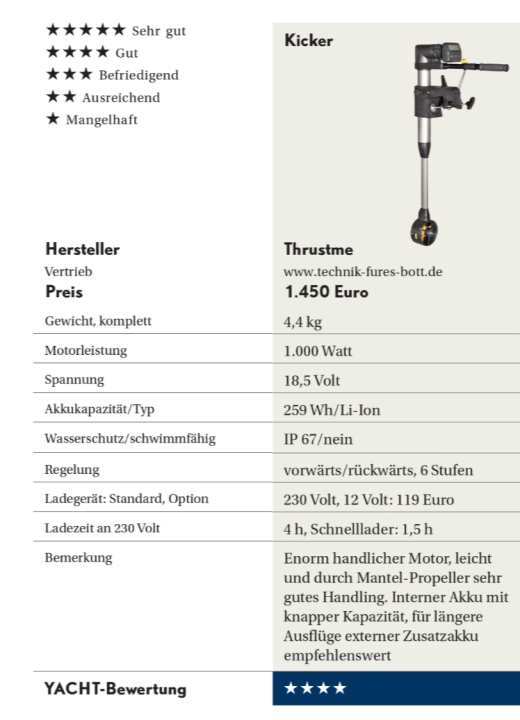
Torqeedo Travel 603(1,799 euros)
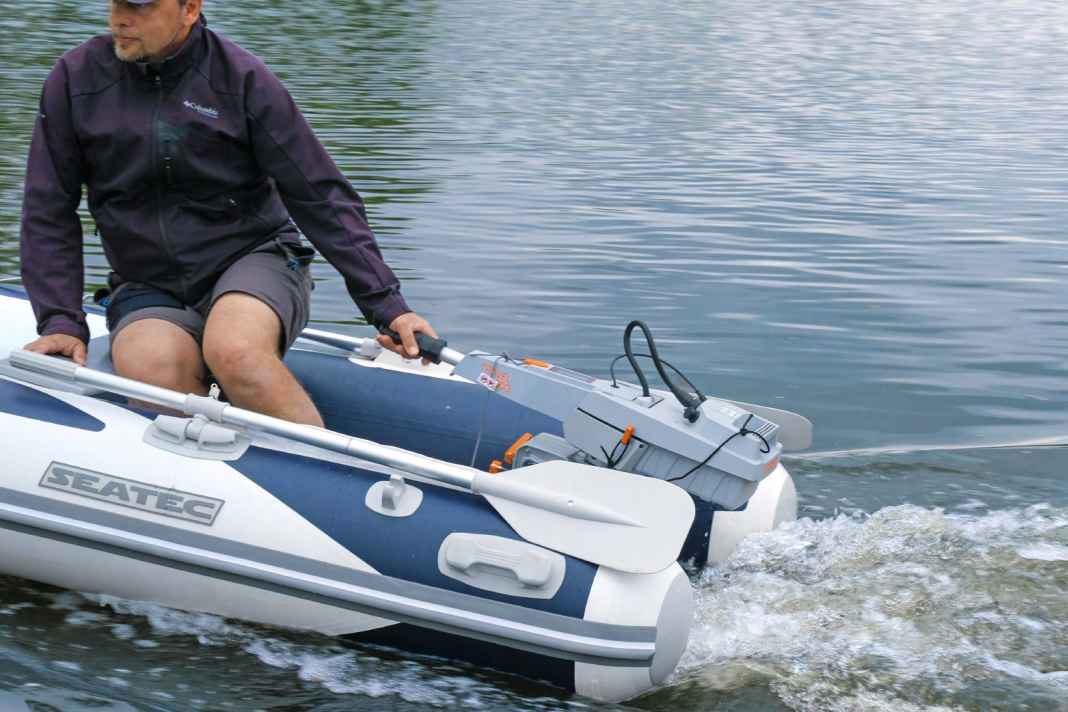





Although the Travel 603 is Torqeedo's smallest model, it was the most powerful motor in the test. This is mainly due to the large, powerful propeller. Extensive excursions are possible thanks to the 500 Wh battery. You can motor for around three hours at rudder speed. The drive takes over many parts from the more powerful Travel 1103, which is why everything is very solid and massive compared to the Temo and Kicker, and this affects the weight. The Travel weighs about as much as the lightest petrol outboards. The floating battery can be removed for transfer to the dinghy. This means that the electric motor can also remain on the dinghy for recharging. Practical: An optional cable can be used to charge directly from the on-board power supply.
- + High battery capacity
- + Very good range indicator
- + Very high thrust
- - Comparatively heavy
- - Somewhat unwieldy
